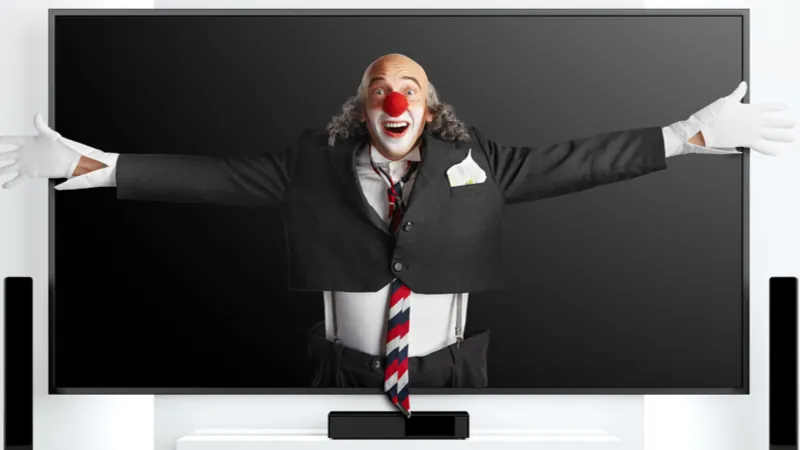If you have been following the mainstream media recently, you have probably seen a story about hyperbaric oxygen treatment and claims that it can reverse aging. Unfortunately, the media hype surrounding the results is nothing like the reality of the actual research paper, and this is another example of how shoddy journalism harms our field.
Welcome to the media circus
Back in July, we talked about how hyperbaric oxygen therapy may reduce age-related cognitive decline in older people, which was based on the results of another study. A new publication from the same team of Israeli scientists led by Prof. Shai Efrati has further explored these original findings, and while the results are interesting, the media hype and marketing surrounding those results is frankly ridiculous and entirely unwarranted.
The researchers of this new study have shown the effects of hyperbaric oxygen therapy on the telomeres of immune cells and its influence over cellular senescence [1]. While the paper itself is appropriately scientific, the publicity resulting from this study is the exact opposite, showing no modesty or modicum of restraint.
One only has to look around to see utterly ridiculous media interpretations of these results. Yahoo proclaims ‘It Sure Looks Like Humans Have Found a Way to Reverse Aging’, Al Jazeera’s article is entitled ‘‘Backward in time’: Israeli scientists claim to reverse ageing’, and there are many more examples.
This is all par for the course when most media organizations cover our field, and, sadly, it only makes it harder for those of us who are working earnestly to support progress. It also once again serves to highlight the urgent need for journalists to learn to discern what study results actually mean instead of hyping stories to sell papers.
So, what did the new study really discover?
The actual results showed that hyperbaric oxygen therapy did show an increase of ~20% in average telomere length in certain immune cells. This is, on the surface, impressive, but the caveat is that the T cells examined have highly dynamic telomeres, and they can fluctuate considerably, depending on their situation. This does not mean that this change is not significant, but it is worth keeping in mind that similar changes can be observed in these cells as the result of regular exercise.
The other notable result is that biomarkers of cellular senescence also saw a ~35% fall in the same T cell population. Again, the problem with interpreting these results as rejuvenation or age reversal is that T cells are a poor choice of cell type to use for this kind of thing due to their highly dynamic nature. Unfortunately, they are a popular cell type to use in these sorts of studies, due to the ease of collection from the bloodstream.
These particular immune cells can have large variance in their telomere length based on the demand for cellular replication at that particular time. T cell populations replicate rapidly in the face of pathogens, and with each replication, the telomeres shorten, meaning that telomere lengths can vary in these cell populations from day to day. Infection and other environmental factors can play a key role in the status of T cell telomeres, and this is why they are not overly useful as aging biomarkers.
Finally, only 35 adults aged 64 and older were the subject group for this study, which makes this a pretty small study and certainly not large enough to draw conclusions of age reversal from.
Introduction: Aging is characterized by the progressive loss of physiological capacity. At the cellular level, two key hallmarks of the aging process include telomere length (TL) shortening and cellular senescence. Repeated intermittent hyperoxic exposures, using certain hyperbaric oxygen therapy (HBOT) protocols, can induce regenerative effects which normally occur during hypoxia. The aim of the current study was to evaluate whether HBOT affects TL and senescent cell concentrations in a normal, non-pathological, aging adult population.
Methods: Thirty-five healthy independently living adults, aged 64 and older, were enrolled to receive 60 daily HBOT exposures. Whole blood samples were collected at baseline, at the 30th and 60th session, and 1-2 weeks following the last HBOT session. Peripheral blood mononuclear cells (PBMCs) telomeres length and senescence were assessed.
Results: Telomeres length of T helper, T cytotoxic, natural killer and B cells increased significantly by over 20% following HBOT. The most significant change was noticed in B cells which increased at the 30th session, 60th session and post HBOT by 25.68%±40.42 (p=0.007), 29.39%±23.39 (p=0.0001) and 37.63%±52.73 (p=0.007), respectively.
There was a significant decrease in the number of senescent T helpers by -37.30%±33.04 post-HBOT (P<0.0001). T-cytotoxic senescent cell percentages decreased significantly by -10.96%±12.59 (p=0.0004) post-HBOT.
In conclusion, the study indicates that HBOT may induce significant senolytic effects including significantly increasing telomere length and clearance of senescent cells in the aging populations.
Conclusion
It seems highly unlikely that this approach is clearing senescent cells in the wider body; rather, these results are better explained by the dynamic nature of immune cells, a small study group, and a questionable choice of biomarkers. If hyperbaric oxygen treatment actually removed ~35% of senescent cells in the wider body, it would surely have been noticed by now, certainly if the results in mice are any indication. Senescent cells play a key role in multiple age-related diseases as well as chronic inflammation, and removing these cells in mice leads to rejuvenation; if the same were true of hyperbaric oxygen treatment, it should be apparent.
This really boils down to being a case of a poor choice of metrics being interpreted as meaningful reversal of cellular aging by generally clueless media organizations that are more interested in clickbait and selling papers than they are in actual scientific discovery and factual reporting. Promoting these results as conclusive proof of systemic age reversal only serves as publicity for people with a vested interest in selling hyperbaric oxygen therapy.
Literature
[1] Hachmo, Y., Hadanny, A., Daniel-Kotovsky, M., Catalogna, M., Fishlev, G., Lang, E., … & Bechor, Y. (2020). Hyperbaric oxygen therapy increases telomere length and decreases immunosenescence in isolated blood cells: a prospective trial. Aging, 12.




